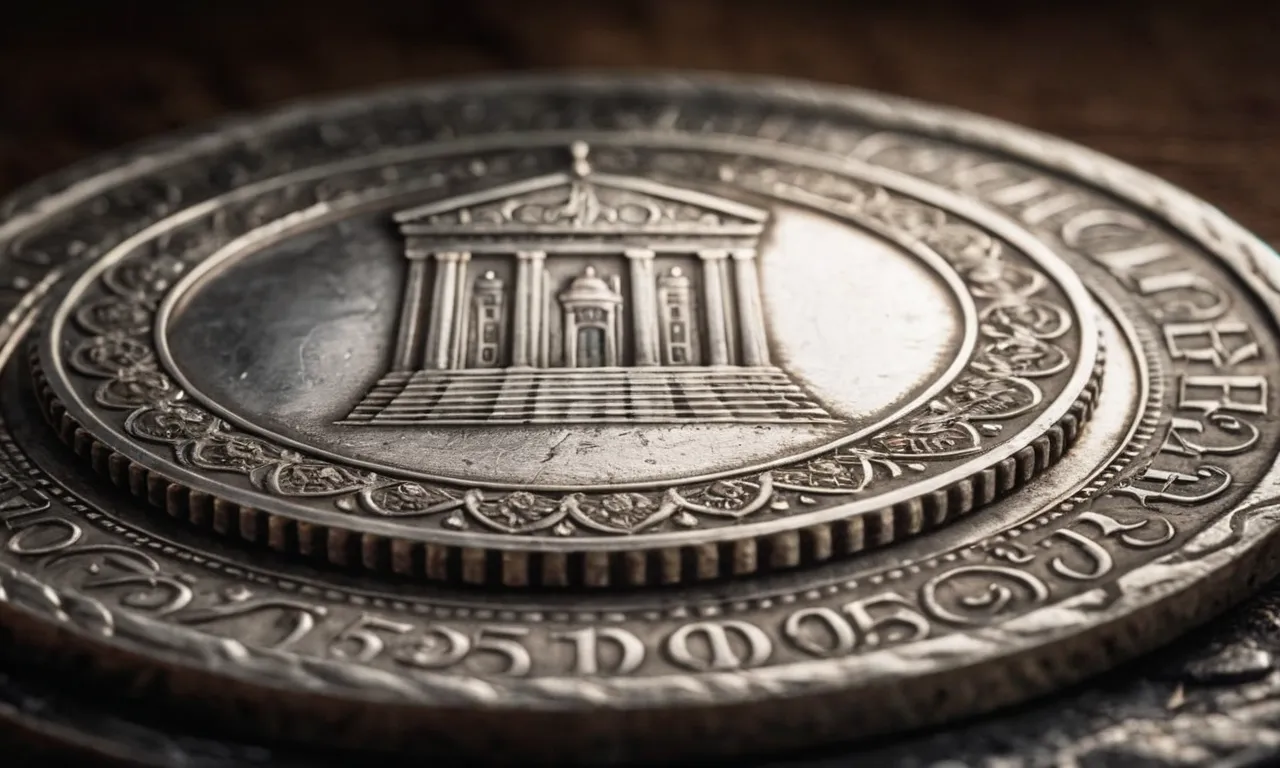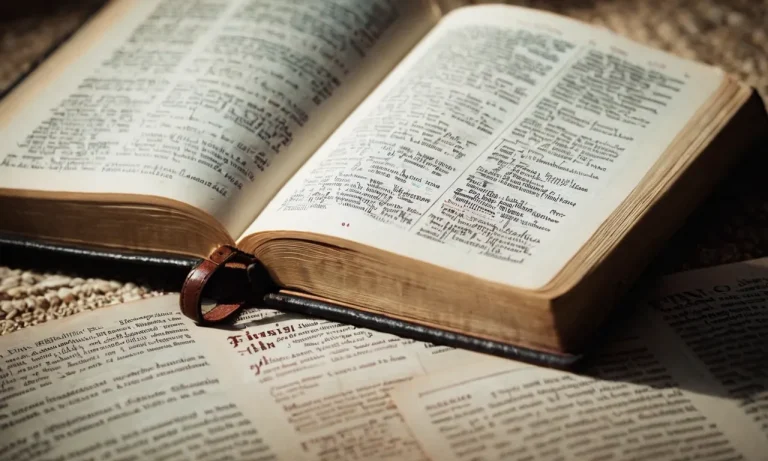The Value Of Silver In Biblical Times
Silver has captivated humans for thousands of years with its alluring glow and usefulness as a precious metal. In biblical times, silver held an important place both economically and symbolically. If you’re wondering what a piece of silver was worth back then, read on for a deep dive into the history and value of this precious metal during ancient times.
Throughout history, including during the biblical period, the value of silver fluctuated depending on supply and demand trends as well as how rare it was to come by. Generally during the biblical age a single silver shekel, the main unit of silver currency used, was worth about a month’s wages for an average laborer.
In this comprehensive guide, we will explore the role of silver in biblical times, looking at how much a silver shekel or other piece of silver was worth both economically and socially. We’ve structured the information clearly into sections to take you through:
* The history and origins of using silver as currency
* The economic value and purchasing power of biblical silver
* The symbolic meaning and spiritual value placed on silver in the Bible
The Origins and Importance of Silver in Antiquity
When Silver First Became Used as Currency
Silver was one of the earliest metals used as currency, with the first known silver coins minted around 700 BC in ancient Lydia. The discovery of large silver deposits in Asia Minor led King Croesus to issue the first true silver coins, replacing the crude nuggets that had previously served as money.
These coins were made from electrum, a naturally occurring alloy of gold and silver. The guaranteed purity and weight of the coins made them far superior as a medium of exchange compared to previous forms of commodity money.
The use of silver as money quickly spread to the Greek city states and then throughout the Persian Empire. By 500 BC, Athens had become the leading producer of fine silver coins known as drachmas, which would remain a stable currency for centuries and also influence later Roman coinage.
According to historical records, the prolific silver mines around Athens provided the city with a plentiful supply of silver, allowing it to mint millions of coins annually at its peak.
Why Silver Was Prized in Ancient Times
In antiquity, silver’s whitish brilliance made it a natural choice for ornamentation and jewelry in ancient cultures around the world. Its relative softness and malleability made silver easy to shape and work into decorative objects and tableware.
But one of the main reasons silver was so highly prized was its rarity compared to other metals like iron or copper.
The difficulty of extracting silver from ore meant annual production was relatively low compared to metals like iron or lead. Estimates put total Roman silver production at around 200 tons per year. The limited supply allowed silver’s value to remain high and made it ideal for use in coins of high denomination.
Silver also has the highest electrical and thermal conductivity of all metals, so was valued for use in ancient mirrors and plating. Certain properties also made it suitable for medical use. People in antiquity believed silver possessed anti-disease powers and Hippocrates documented early uses of silver powder for wounds and ulcers.
So while gold often symbolized power and status, silver represented a convenient and dependable medium of exchange in ancient times, as well as practical applications that made it a coveted precious metal in its own right.
The shiny appeal of silver made it a popular choice for jewelry and ornaments among both the wealthy and common classes in antiquity.
The Economic Value of Silver in Biblical History
Silver Shekels and Other Denominations
In ancient Israel, the most common unit of silver currency was the shekel (meaning “weight”). It was primarily used to pay taxes, buy land, and pay wages. The shekel was divided into smaller units like the beka and gerah. Larger units included the mina (50 shekels) and talent (3,000 shekels).
Silver ingots called bullion were also used in trade.
The Purchasing Power of Silver Shekels and Talents
Silver shekels and talents had incredible purchasing power in biblical times. For example:
- 30 shekels was the price paid to Judas for betraying Jesus (Matthew 26:15)
- 50 shekels was the dowry King Saul requested for his daughter Michal to marry David (1 Samuel 18:25)
- 600 shekels was the price Abraham paid for the Cave of Machpelah to bury his wife Sarah (Genesis 23:16)
Adjusted for inflation, 30 ancient shekels equates to about $30,000 today! Truly astonishing how much silver was worth.
How Much Typical Goods Cost Using Silver
Here are some examples of what daily goods and services cost using silver in biblical times:
| 1 lamb | 4 shekels |
| 1 homer of barley | 1 shekel |
| 1 day’s wages | 1/2 shekel |
| 1 upper garment | 5 shekels |
As you can see, silver was extremely valuable and used extensively in commerce and trade in ancient biblical days. A little bit of silver went a long way!
The Significance and Symbolism of Silver in the Bible
Silver Treasure and Wealth
In Biblical times, silver was considered an extremely valuable precious metal and form of currency. According to authoritative sites like Bible Odyssey, silver was often mentioned along with gold to represent great riches and treasure.
For example, in Genesis 13:2 it states “Now Abram was very rich in livestock, in silver and in gold.” Silver’s value also made it a common form of money and means of exchange in ancient Middle Eastern civilizations.
The rarity and purity of silver increased its worth. Job 28:1 states, “Surely there is a mine for silver, and a place where gold is refined.” Extracting silver from ore was an arduous task in those days before modern mining technology. Hence, supplies of silver were more constrained compared to today.
The difficulty in obtaining large quantities of silver significantly raised its value in ancient commerce and trade.
The Purifying Nature of Silver
Silver holds symbolic importance in the Bible for its refining and purifying traits. As illustrated in Malachi 3:3, “He will sit as a refiner and purifier of silver.” To refine silver, metalsmiths needed to heat the silver to extreme temperatures to remove impurities.
They could gauge when the silver was fully purified by seeing their clear reflection in the molten metal. This process of burning away impurities served as an analogy for spiritual refinement and holiness for biblical prophets and teachers.
Silver’s association with purity also stems from its bright white shine once refined. Psalms 12:6 declares, “The words of the Lord are pure words, like silver refined in a furnace.” The cleansing, sterilizing properties of silver also reinforce this sanctifying symbolism throughout the biblical texts.
Silver Imagery in Biblical Literature and Teachings
Beyond literal treasures and purifying processes, silver also holds symbolic meaning through metaphorical imagery in the Bible. Ecclesiastes 12:6 references the fading shine of silver to evoke visuals of aging and deterioration – “Remember him before the silver cord is snapped.”
Song of Solomon depicts eyes, skin, arms and legs shimmering like brilliant silver to signify beauty and radiance.
The Bible utilizes silver in many insightful analogies as well. For example, Proverbs 10:20 compares the high value of wisdom and righteous speech to silver, “The tongue of the righteous is choice silver.”
Furthermore, the intrinsically precious nature of silver serves as a vivid way for biblical authors to underscore spiritual truths about righteousness, redemption, the human soul and the word of God.
Conclusion
Silver held an integral role economically and spiritually in biblical history. A silver shekel could buy a decent amount of typical goods and represented a fair wage for average labor. Beyond purely economic value, silver carried symbolic importance and religious meaning thanks to its preciousness and purifying nature.
To recap, a single silver shekel during the biblical age translated to about a month’s wages, though the value changed over time. We covered the origins and reasons why silver became a preferred currency and commodity in the ancient world.
Additionally, we explored the rich biblical imagery and significance of silver that elevated it beyond simply economic value in spiritual contexts.








